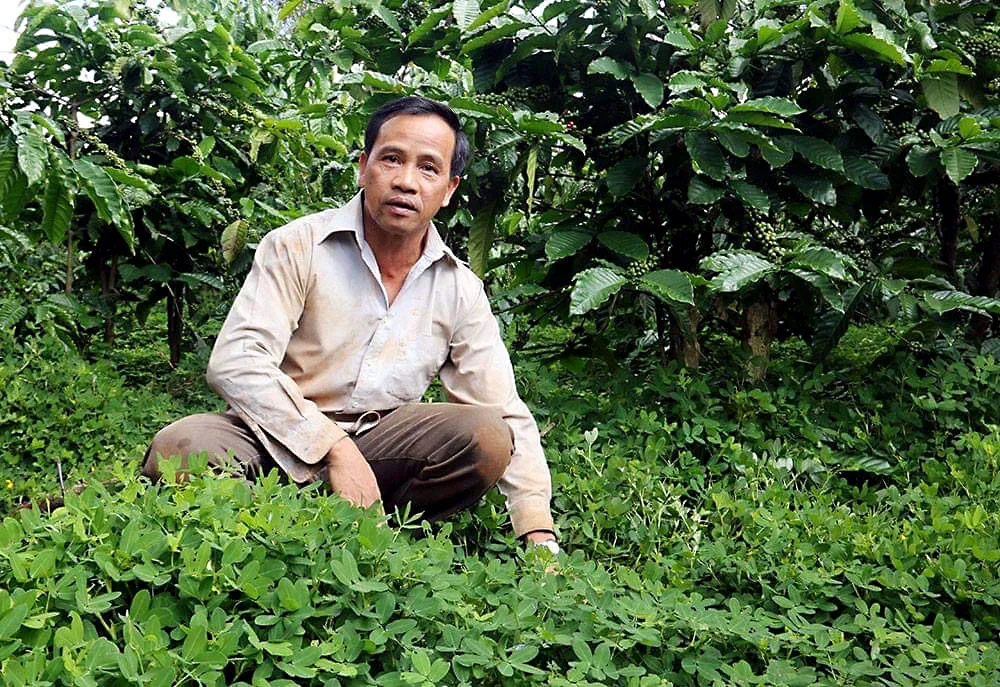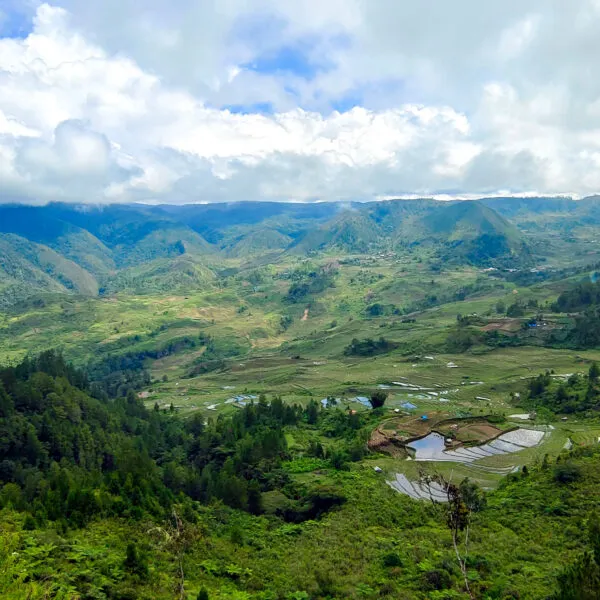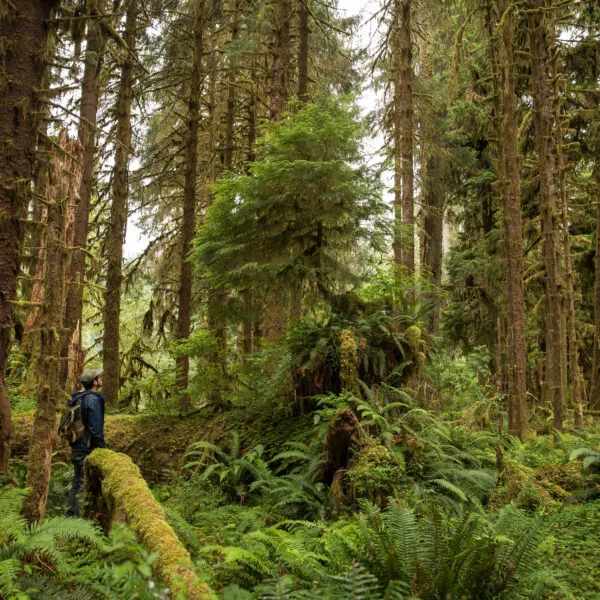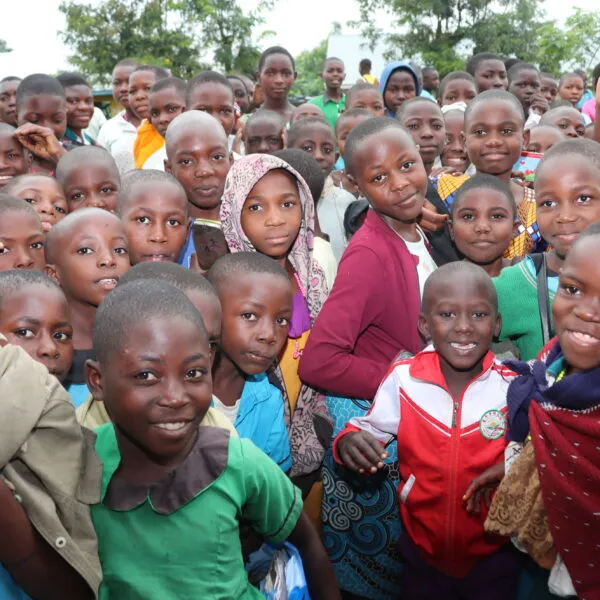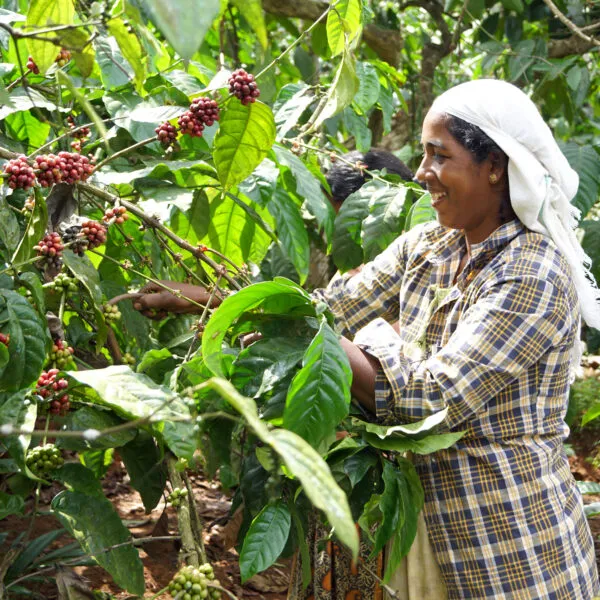With rich soil and a cool climate, Di Linh district in Vietnam’s Central Highlands has long been an agricultural heartland for tea and coffee. The lush, terraced hills offer a slower pace of life away from Vietnam’s bustling cities—but earning a living from the land here isn’t always easy. Follow one farmer’s 40-year journey to transform his farm into a thriving business and healthy ecosystem. His chosen path: regenerative coffee farming.
When Trinh Tan Vinh came to Di Linh to set up a tea plantation back in 1983, he was just 17 years old. At the time, the tea price was so low he struggled to support his family. Eventually, in 1988, Vinh switched from tea to coffee, and, like others in the region, initially practiced intensive monoculture farming, relying heavily on toxic chemical pesticides and fertilizers, which he sprayed about six to eight times per year.
Caught in a vicious cycle
These agrochemicals did more harm than good, killing off natural enemies like spiders and ladybugs that could help deal with common pests (aphids and mealybugs). They also depleted the nutrients in the soil, trapping Vinh in a vicious cycle of chemical use. On top of all this, the pesticides and fertilizers were costly and caused serious health problems for Vinh and his family.
But everything started to change in 2008 when Vinh started working with the Rainforest Alliance and received training in more sustainable growing practices—setting him on a path that would take him toward regenerative farming.
A regenerative coffee journey
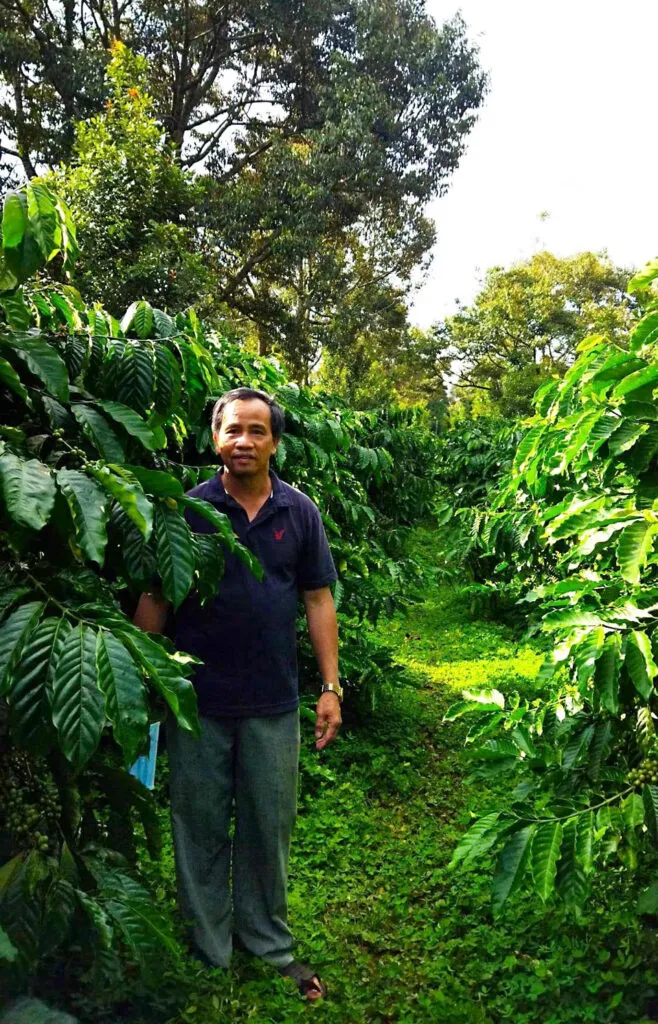
Regeneration doesn’t happen overnight: first we help farmers reduce their pesticide and fertilizer use and adopt practices that enrich the land, like planting shade trees and other crops to protect and nourish the soil, so that eventually they don’t need agrochemicals at all.
Vinh’s regenerative journey began by planting a low-growing crop known as the “Pinto peanut” across his farm to help reduce erosion and improve soil health. Following the Rainforest Alliance’s Integrated Pest Management approach, organic manure and “bioinoculant” (eco-friendly microorganisms) were regularly applied to the soil and Vinh monitored pest and natural enemy populations, as well as weather patterns, to determine when control measures were necessary. The result: fewer outbreaks of pests and diseases.
Next, Vinh planted durian and macadamia trees alongside his coffee plants—a practice known as intercropping—to provide shade, increase biodiversity, and boost his income.
Thiet Nguyen, current Vietnam Country Director for the Rainforest Alliance, remembers working with Vinh at the time to train him on the requirements of the Rainforest Alliance Sustainable Agriculture Standard.
“He was a very active learner and actually one of the first coffee farmers in Vietnam to implement our certification program,” remembered Nguyen.
Adapting to the local situation in Vietnam
But success didn’t come overnight. Regenerative agriculture is not a one-size-fits-all approach, rather it helps farmers embrace climate-smart practices tailored to their particular climate challenges and landscape, which can differ widely from place to place.
“We learned that shifting from monoculture farming to intercropping led to a competition between coffee and shade trees for water and nutrients,” explained Nguyen.
“In the first two or three years, these challenges brought a lot of worries. We had to make a decision as a family as to whether or not we would continue with this new approach,” Vinh said.
However, after seeing that even with less spraying and watering his productivity did not decrease—as well as taking into account the better price he was receiving for selling Rainforest Alliance Certified coffee—Vinh ultimately decided to stick with the regenerative approach.
Learning from their mistakes, Vinh and Nguyen decided to reduce the density of shade trees on the farm. They eventually landed on the right mix of intercropped plants and coffee plants so that the two supported each other without competing for light or nutrients.
The ancients often said that ‘land is the basis of agriculture,’ which is absolutely true, but many farmers—including me in the past—had forgotten this and listened to the advertisements of the fertilizer and pesticide companies instead.
Trinh Tan Vinh, coffee farmer
Higher profits and thriving soil
For Vinh, year three was the real turning point. With a 25 percent reduction in costs, his profits increased by 35 percent.
“The ancients often said that ‘land is the basis of agriculture,’ which is absolutely true, but many farmers—including me in the past—had forgotten this and listened to the advertisements of the fertilizer and pesticide companies instead,” Vinh shared.
More than 35 years after he first switched from tea to coffee, Vinh’s dedication to regenerative practices has transformed his farm into a thriving ecosystem and prosperous business. Today, Vinh’s model farm is regularly visited by farmers and sustainability experts looking to learn more about regenerative farming. Currently, Vinh sells 70 percent of his coffee to the market at a very good price, and he roasts, packages, and sells the remaining 30 percent directly to visitors. The coffee sales, combined with the additional income he earns from macadamia and durian, earn him a total annual income that is about 40 percent higher than other farmers in the area.
“We need to see soil as a living system.”
As coffee comes under increasing threat from climate change, the shift to regenerative agriculture is a way to protect coffee farmers, while also restoring the environment for current and future generations. Though it took time and hard work, for Vinh, the benefits of improved productivity and greater climate resilience are now clear—and his example is inspiring other farmers in the region to make the switch.
As he puts it, it comes down to a mindset shift: “Overuse of chemical fertilizers and pesticides is the quickest way to kill the soil and damage the environment,” he said. “We need to see soil as a living system.”
